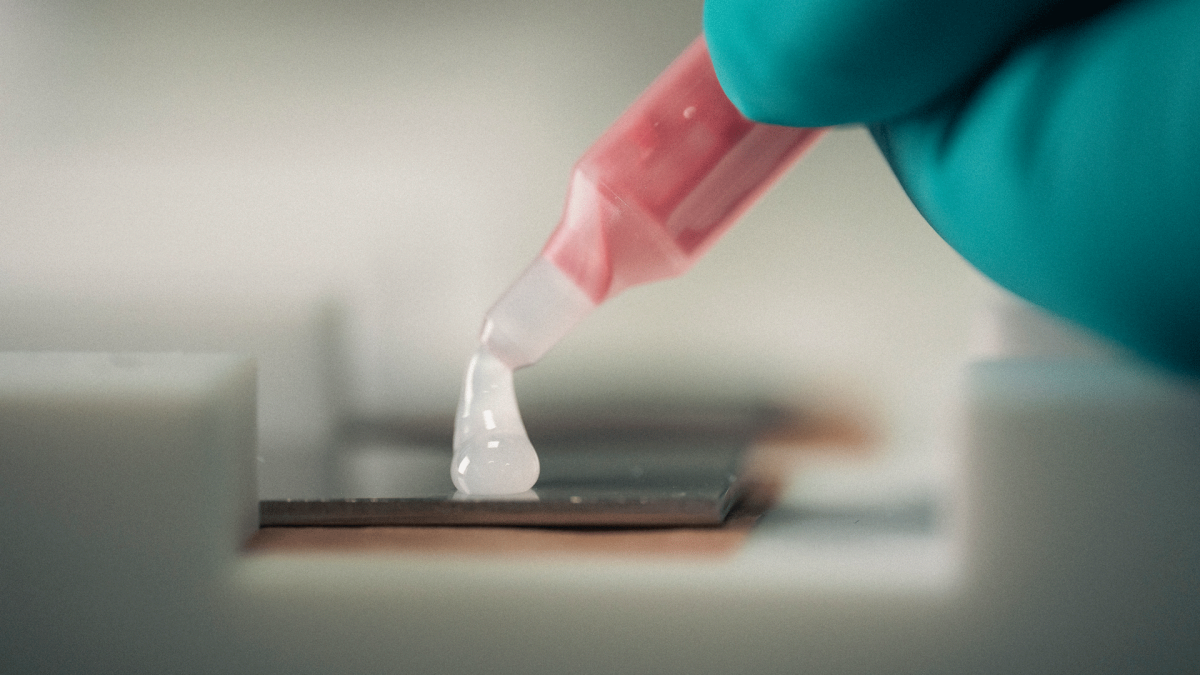Adhesive testing: The right adhesive for every situation
Other characteristic factors such as tensile strength, temperature resistance and chemical resistance are also important properties.
It is important to validate the adhesives to ensure that they fulfil the specific requirements of an application. Sample preparation and the exact procedure for bonding are also crucial here. Therefore, the personnel who perform the bonding process need to have special qualifications as stated under standards like DIN 2304.
Functional principle of the tensile shear test of overlap adhesions
A whole series of variables must be defined for validating a bond. Important parameters such as the joining material to be used, the gap thickness, the curing time and the sample preparation procedure are defined with the customer in advance. As the number of parameters is very high, a checklist is used to define them in order to ensure that all details are taken into account and that the customer can get maximum findings from the test series.
Sample preparation forms the basis for performing the tensile shear test. The samples must have specific dimensions, which are specified in standards. The surfaces to be bonded must be clean and free of grease to ensure optimum strength of the adhesive. The aim of validation is often to compare different types or combinations of cleaning agents, primers or other sample preparations such as grinding in order to achieve an optimum result.
Bonding is carried out by applying the adhesive to the prepared surfaces. The exact amount and type of adhesive applied depends on the specific application. After the adhesive is applied, the surfaces are joined. We use special equipment in our laboratory to properly position the overlap of the parts to be bonded. The curing process varies depending on the type of adhesive used. A bonding report is prepared for sample preparation and bonding and all important data is recorded in it.
The tensile shear strength is tested by applying a shear force to the bonded samples. The shear force is applied parallel to the bonding surface and continuously increased until the bond fails. The maximum force applied is then divided by the area of the adhesive bonding to calculate the tensile shear strength.
It is not only the determined value of the tensile shear strength that is important for analysing the adhesive bonding. The type of fracture also provides an important indication of the suitability of the bonding. The various fracture appearances (cohesive fracture, adhesive fracture, component failure, mixed fracture) are assessed by our experts and specified in the test report for each sample.
Your benefits
- Certified personnel according to DIN 2304 / DIN 6701
- Precise coordination before the test and mutual definition of the parameters using a checklist
- Sample preparation, bonding and testing from a single source
- Accurate documentation - In addition to the test report, you will receive a bonding report if the bonds are carried out by our testing laboratory
The Würth Industrie Service GmbH & Co. KG collects and processes the personal data provided in the form in order to process the requested request for you. Please note the mandatory fields in the forms. The legal basis for this processing, the absolutely necessary data, is Art. 6 para. 1 lit. b DSGVO, implementation of a pre-contractual measure. The processing of data voluntarily provided by you is carried out on the basis of Art. 6 para. 1 lit. f DSGVO. Thereafter, processing is permissible which is necessary to safeguard our legitimate interests. Our legitimate interest is to have contact with you, our customers, to improve our consulting quality and to be able to contact you more easily in case of possible queries. The data collected will only be stored by us for as long as is necessary to process your enquiry and to contact you. They are then deleted.
Supplementary data protection information, in particular regarding your rights to information, correction, deletion, restriction of processing, objection and complaint, can be found in our data protection declaration.

